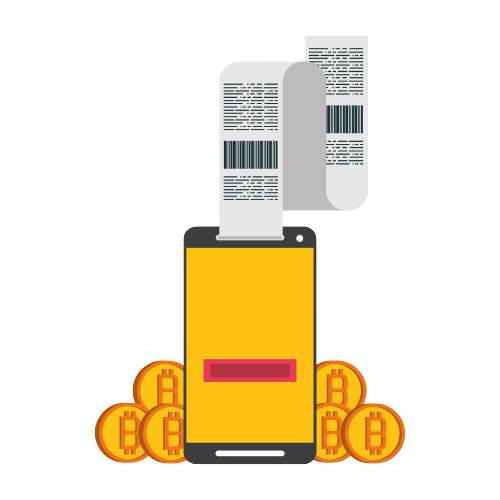
Blockchain explorers are invaluable tools that allow users to search and navigate public blockchain networks like Bitcoin and Ethereum. They enable you to track transactions, view blockchain data, check balances, and more. Blockcypher is one of the leading blockchain explorers for Bitcoin, Ethereum, and other cryptocurrencies.
In this comprehensive guide, we’ll explain what Blockcypher is, its key features and capabilities, and how it can help you monitor blockchain activity. We’ll also recommend the best Bitcoin wallet to securely store your coins. Let’s get started!
Part 1 – What Is Blockcypher?
Blockcypher is a popular blockchain explorer that enables users to search, view, and analyze data on multiple public blockchain networks. Founded in 2014, Blockcypher provides a suite of blockchain developer tools and APIs along with its web-based blockchain explorers.
Here are some key facts about Blockcypher:
-Monitors Bitcoin, Ethereum, Dash, Dogecoin, and more
-Tracks over 700 cryptocurrencies across 44 blockchains
-Used by over 100,000 developers
-Processes over 800 million blockchain API calls per month
-Headquartered in San Francisco, CA
-Real-time transaction tracking and notifications
-Free to use with some paid premium API services
-Blockchain search engine capabilities
-Customizable and embeddable blockchain widgets
Blockcypher is best known for its fast, reliable, and fully-featured web-based blockchain explorers. These explorers allow anyone to easily search addresses, transactions, blocks, and other on-chain activity across different cryptocurrency networks. The explorers are open-source and make blockchain transparency easy.
Blockcypher also provides Bitcoin and blockchain developers with a robust suite of APIs and data endpoints to build applications. The Blockcypher Wallet API enables developers to integrate Bitcoin, blockchain, and crypto features into their apps.
Overall, Blockcypher aims to be the most trusted and reliable source for blockchain data across Bitcoin, Ethereum, and emerging cryptocurrencies. Next, let’s look at the capabilities of the Blockcypher Explorer.
Part 2 – Key Features And Capabilities
The Blockcypher explorers pack a wide array of features to investigate blockchain activity. Here are some of the key capabilities:
Search
Search By Blockchain Address, Transaction Hash, Block Number, Or Token Name Across Supported Blockchains.
Look Up The Balance And Transactions For Any Address On Bitcoin, Ethereum, Etc.
Monitor Any Wallet For Incoming And Outgoing Transactions In Real Time.
Blockchain Navigation
Navigate Through Blocks And Transactions On A Visual Interactive Blockchain.
View Details On Each Block Including Hash, Height, Size, Version, And Transaction Count.
Click Any Transaction To View Confirmations, Inputs, Outputs, And Other Metadata.
Transaction Tracking
Track Any Blockchain Transaction Through Confirmation Stages To See When It Is Fully Validated.
Get Notified By Email Or Webhook When Transactions Receive Confirmations.
Calculate The Transaction Fee That Was Paid To Miners.
View Memos, Payment Notes, Or Other Metadata Appended To Transactions.
Network Stats
View Live Data On Blockchain Network Activity Including Transactions Per Second, Network Hash Rate, Average Block Times, Total Blocks, And More.
Monitor The Growth Of Blockchain Networks Over Time.
Check Relative Mining Power Distribution Across Mining Pools For Bitcoin And Other Proof-Of-Work Chains.
Additional Tools
Decode And Verify Messages Signed Via Bitcoin Signatures.
Convert Between Hexadecimal, Binary, And Decimal Notation For Transaction Inputs/Outputs.
Calculate Fiat Conversion Rates For Coin Amounts Based On Exchange Pricing Data.
Browse Bitcoin Improvement Proposals (Bips) And Ethereum Improvement Proposals (Eips).
Blockcypher Makes Blockchain Analysis Accessible. Whether You Want To Look Up Your Wallet Balance, Examine A Suspicious Transaction, Or Gain Insights Into Network Activity, Blockcypher Provides The Tools.
Next, Let’s Look At Blockcypher’s Offerings For Different Blockchains.
Part 3 – Blockchain Support
Blockcypher was originally launched in 2014 to support only the Bitcoin blockchain. It has since expanded to cover over 44 blockchains across more than 700 cryptocurrencies.
Here are the main blockchain networks currently indexed and searchable on Blockcypher:
Bitcoin (BTC)
Blockcypher provides full support for the Bitcoin blockchain. Look up any BTC address, transaction, block, and on-chain message.
Get real-time notifications on Bitcoin payments. All Bitcoin network statistics are available.
Ethereum (ETH)
Search transactions, view balances, and read smart contract metadata on the Ethereum blockchain. Find any ERC-20 token contract to see the total supply, transfers, holders, and more.
Litecoin (LTC)
Browse Litecoin addresses and blocks. Analyze LTC transactions, fees, mem pools, and network stats like hash rate, difficulty, and block propagation.
Dogecoin (DOGE)
Much Blockcypher. Wow. Look up Dogecoin wallets, transactions, blocks, and network data. Track payments on the Doge chain.
Dash
Explore Dash addresses, search transactions, view blocks and see network stats for the Dash blockchain.
Blockcypher plans to add more blockchain support over time for networks like Cardano, Polkadot, Solana, and others. It aims to provide a unified blockchain interface and tools.
Part 4 – Acquiring And Using API Access
One of Blockcypher’s most powerful offerings is its suite of blockchain APIs. Developers can access Blockcypher’s data endpoints to build blockchain applications.
Here are the steps to acquire and use Blockcypher’s API:
Navigate to the Developer Dashboard
Go to the Developers page on Blockcypher and click on Dashboard to create an account.
Select a Plan
Choose a free or paid API plan depending on your usage needs. The free plan offers 2,500 requests daily.
Get API Key
Your account will generate a unique API key. Make sure to safely record this.
Integrate the API
Use your key to make API calls from your application to Blockcypher endpoints.
Build Your App
Leverage the Blockcypher APIs to add Bitcoin, wallets, payments, and blockchain data to your platform.
Types of API Endpoints
Blockcypher provides different categories of API endpoints including:

Blockchain Data – Get blocks, transactions, addresses, network metrics, etc.
Wallets – Create and manage HD wallets, addresses, and payments.
Faucets – Utilize test cryptocurrency faucets.
Notifications – Get event alerts for transactions, confirmations, etc.
Exchange Rates – Get currency exchange rates for price conversions.
Whether you want to develop a Bitcoin wallet, accept payments in your app, enrich your data with blockchain analytics, or get real-time crypto conversion rates, Blockcypher provides the tools. The API documentation includes code snippets and examples in Python, PHP, Node.js, and more.
Now let’s look at how you can utilize Blockcypher Explorer and its APIs.
Part 5 – Use Cases And Applications
There are a variety of ways developers, businesses, and individuals can use Blockcypher Explorer and APIs:
Wallet Development
Build HD cryptocurrency wallets into your applications using Blockcypher’s Wallet API. Let users easily generate addresses and transact.
Payment Integration
Accept Bitcoin and altcoin payments into your shop by integrating Blockcypher’s transaction notifications to monitor for new sales.
Transaction Validation
Confirm that Bitcoin transactions sent to you have sufficient confirmations to reduce fraud risk by polling transaction data.
Supply Chain Tracking
Leverage Blockcypher’s blockchain data in supply chain solutions to provide transparency through production and distribution.
Data Analytics
Gain business intelligence by extracting Blockcypher’s blockchain data into analytics programs like Excel, Python, or R to identify trends.
Crypto Prices
Use Blockcypher’s currency exchange rates API to display real-time coin prices and exchange rates in your applications.
Portfolio Tracking
Let users connect their wallets and monitor their full blockchain portfolio across assets using Blockcypher balance lookups and address APIs.
Fraud Prevention
Check inbound payments against Blockcypher to ensure transferred funds come from reputable addresses without suspicious activity.
The applications are endless. Blockchain developers can utilize every facet of Blockcypher’s tools to enrich applications with transaction lookups, wallet integrations, event tracking, market data, and blockchain analytics.
For non-developers, web explorers provide user-friendly access to search addresses, view balances, read transaction metadata, and stay on top of payments.
Conclusion
Blockcypher is a highly valuable blockchain explorer providing deep visibility into cryptocurrency transactions, addresses, blocks, and network activity across Bitcoin, Ethereum, and additional blockchains. With its fast, accurate, and detailed blockchain data, Blockcypher enables anyone to search, monitor, and analyze blockchain networks. Developers can tap into a rich suite of Blockcypher APIs to integrate wallets, payments, analytics, and blockchain data into diverse applications. For both the casual explorer and blockchain engineers, Blockcypher is an essential tool for unlocking the transparency and value of cryptocurrencies and public blockchains. When using cryptocurrency, be sure to also select a secure Bitcoin wallet that meets your needs for usability and protection. Blockcypher and its blockchain explorers offer windows into the growing crypto and blockchain ecosystems.